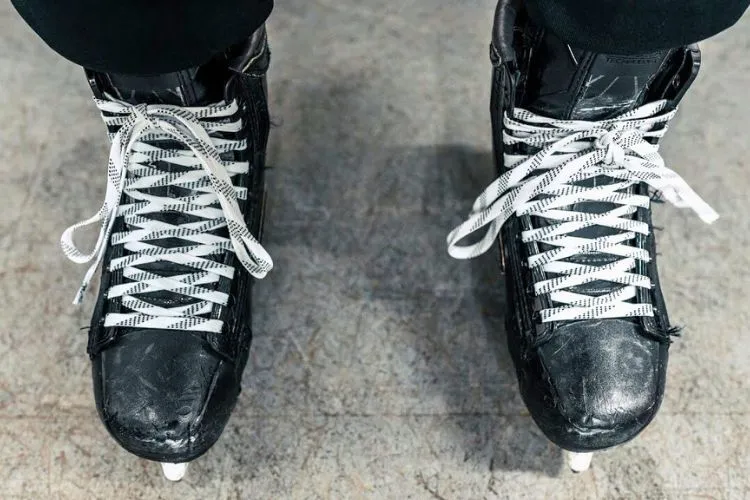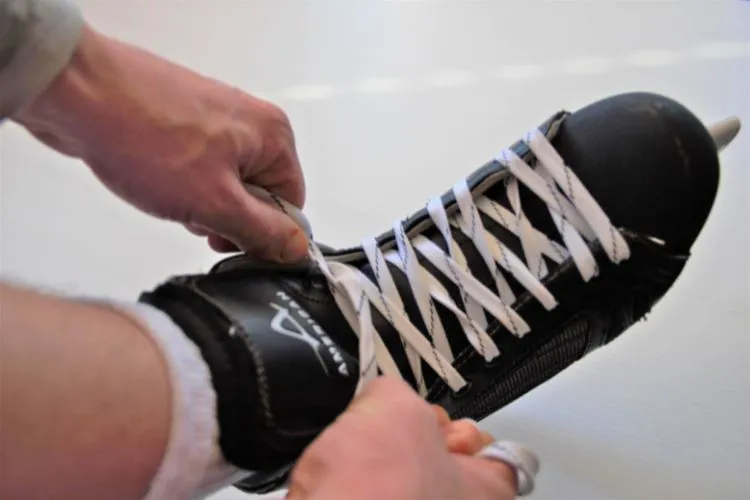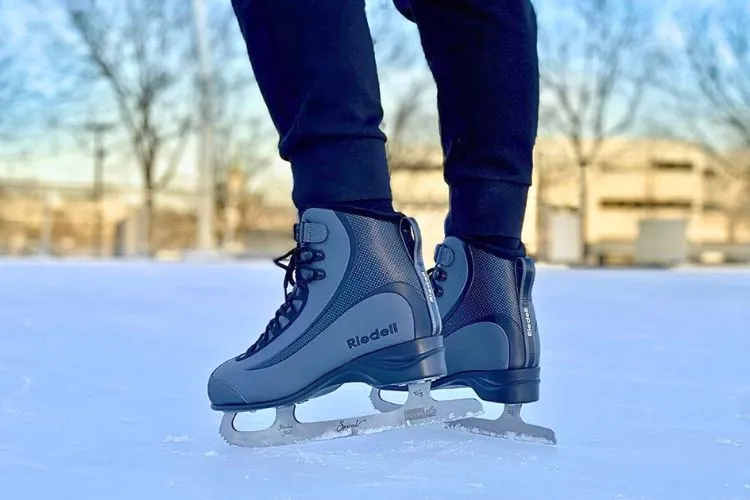Finding the right tightness for ice skates is a balancing act that can significantly impact your performance, comfort, and safety on the ice. Achieving this balance is critical for skaters of all levels, from beginners to seasoned athletes.
This article will guide you through understanding how tight should ice skates be, adjusting them to your needs, avoiding common mistakes, and answering frequently asked questions.

How Tight Should Ice Skates Be?
When it comes to ice skates, the golden rule is to aim for a snug fit without crossing into discomfort. The right fit provides control and stability without cutting off circulation or causing pain. Ideally, your toes should lightly touch the skate’s front without feeling cramped.
Meanwhile, there should be no space around the heel; it needs to stay in place, as any movement here can lead to loss of control and even injuries.
Heel Lock
Ensuring your heel is securely locked in place is crucial. A well-fitting skate will prevent your heel from lifting as you skate. This stability is necessary for effective power transfer from your legs to the ice, helping you skate more efficiently.
Toe Room
Though your toes should touch the front of the skates, they also need some room to move slightly. This small amount of space is vital for maintaining balance and avoiding numbness or pain, which can occur if your toes are too cramped.
Width and Volume
Skates are not one-size-fits-all. They come in various widths and volumes to match different foot shapes. Picking a skate that aligns with the width and volume of your foot, rather than just the length, is essential for a snug fit that doesn’t squeeze or leave too much room.
Lacing Technique
How you lace your skates can make a significant difference in their fit. Effective lacing secures the foot evenly, offers good support, and prevents pressure points. It’s about finding a lacing method that distributes tightness uniformly, providing a firm but comfortable fit.
Adjusting to Your Needs

Skill Level
Beginners might benefit from tighter skates for extra support as they learn to balance and control their movements on the ice. However, more experienced skaters often prefer a slightly looser fit for better flexibility and nuanced control.
Type of Skating
Different skating styles can influence how tight your skates should be. Figure skaters, for example, might opt for a tighter fit for precise movements, while hockey players could favor a bit more looseness for agility and rapid direction changes.
Personal Comfort
Personal preference plays a significant role in determining the right tightness for your skates. Comfort is key to a positive skating experience, so it’s worth experimenting to find what works best for you.
Common Mistakes to Avoid
- Over-tightening: This can lead to discomfort, restricted blood flow, and even injury. Pay attention to how your feet feel in your skates and adjust accordingly.
- Under-tightening: Lacking support and control, skates that are too loose can increase the risk of falls and ankle injuries.
- Ignoring Pain: Discomfort or pain while skating are signs that something might be wrong with the fit of your skates. Don’t overlook these warnings.
Pro Tips
- Take the time to break in new skates gradually. This process helps adjust the fit to your feet.
- Consider seeking professional fitting services. Experts can provide personalized advice tailored to your foot shape and skating needs.
- Regularly inspect and adjust your laces during skating sessions. This practice ensures ongoing support and comfort.
Maintenance Tips for Optimal Fit
To maintain the ideal fit of your ice skates, proper storage is crucial. Avoid leaving them in places where they might get deformed.
Regularly check laces for signs of wear and replace them as needed. For those needing extra support, insoles or custom orthotics can make a significant difference.
Footbed Considerations
The footbed of your ice skates is foundational to comfort and performance, as it molds to the shape of your foot, providing necessary support and cushioning.
It plays a key role in aligning your feet properly within the boot, which can greatly influence balance and skating technique. An ill-fitting footbed can lead to discomfort, reduced power transfer, and even injuries.

When selecting a footbed, pay close attention to your arch type and choose an insole that provides appropriate support for high, medium, or low arches. Look for materials that will offer both comfort and responsiveness to your movements on the ice.
Consider the intensity and frequency of your skating, as well as your specific discipline—figure skating, hockey, or recreational. And don’t forget, trying the skates with the footbeds inside them is essential for assessing the overall fit.
If you’re uncertain, consult with a professional skate fitter who can analyze your foot shape and offer tailored recommendations, ensuring your ice skates are equipped with the right footbed for optimal performance and comfort.
You may also find useful: Types of Ice Skates | Is Ice Skating Easier Than Roller Skating?
Frequently Asked Questions (FAQs)
How do you know if your ice skates are too tight?
Signs of overly tight skates include numbness, pain, and the appearance of blisters. Difficulty in controlling the skates can also indicate that they’re too tight.
Can ice skates be stretched for a better fit?
While minor adjustments can be made, major stretching is not usually recommended. If your skates don’t fit, seeking professional help for adjustments is best.
How should ice skates feel the first time?
New ice skates should feel snug but not painful, with a slight period of adjustment as they mold to the shape of your feet.
Is it better for ice skates to be bigger or tighter?
Neither. The goal is a snug, supportive fit that allows slight toe movement. Too tight or too loose can both lead to problems.
How often should you tighten your ice skates?
Check and adjust the tightness of your skates before each skating session. Ensuring a consistent fit helps maintain support and comfort.
Conclusion
Finding the sweet spot for how tight your ice skates should be is key to a rewarding and safe skating experience. Remember, the right fit is snug but not painful, providing support without restricting movement or circulation.
By paying attention to how your skates feel and making adjustments as needed, you can enhance your performance on the ice and enjoy every moment of your skating journey.

Matthew James is a passionate skater who wanted to create a platform to share his love for skating with others. With a vision to create a vibrant community of skaters, he aims to provide a space where skaters of all levels can connect, learn, and grow together.
